
More glass buildings planned as dead bodies pile up on Innovation Campus
October 17, 2021 | Topics: Issues, Spotlight
By Barbara Agnew and Cheryl Nenn – followed by comments from Charles Hagner, Director of Bird City Wisconsin and author of American Birding Association Field Guide to Birds of Wisconsin.
Collecting dead birds is a new experience. And a horrifying one. All the tragic stories are true, all the unbelievable numbers of birds being killed by glass buildings are real. The photo above shows a single day’s death toll around buildings on the Innovation Campus on October 17 2021. Holding in your hand a dead golden crowned kinglet, magnolia warbler, or ruby throated hummingbird is heart breaking. It is also infuriating because it is preventable.
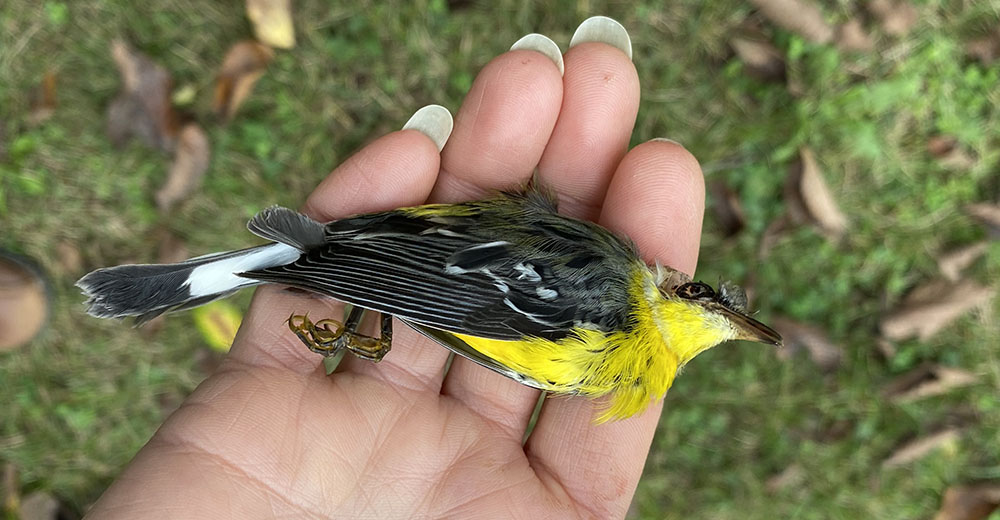
Residents of Wauwatosa, Friends of the Monarch Trail, Milwaukee Riverkeeper, and the broader environmental community have fought to protect the County Grounds Northeast Quadrant for over twenty years. We have always tried to convey how special the County Grounds is. The Northeast Quadrant occupies 235 acres at the confluence of Underwood Creek and the Menomonee River. It has unique topography and thermals (wind currents), which make it especially attractive to migrating birds and butterflies. It’s also very important habitat for a variety of other wildlife.
When a compromise was reached our organizations had an agreement with Wauwatosa and the UWM Real Estate Foundation that the NE quadrant would contain university and research buildings, with limited density and environmentally sensitive design. The City of Wauwatosa paid Kubala Washatko Architects to draw up Master Plan and Design Guidelines, which were published in 2004 and which addressed the issues of sustainability and environmental sensitivity. However, much of this plan has been discarded in lieu of commercial and residential rather than academic development that now far exceeds the square footage and density of what was considered to be sustainable.
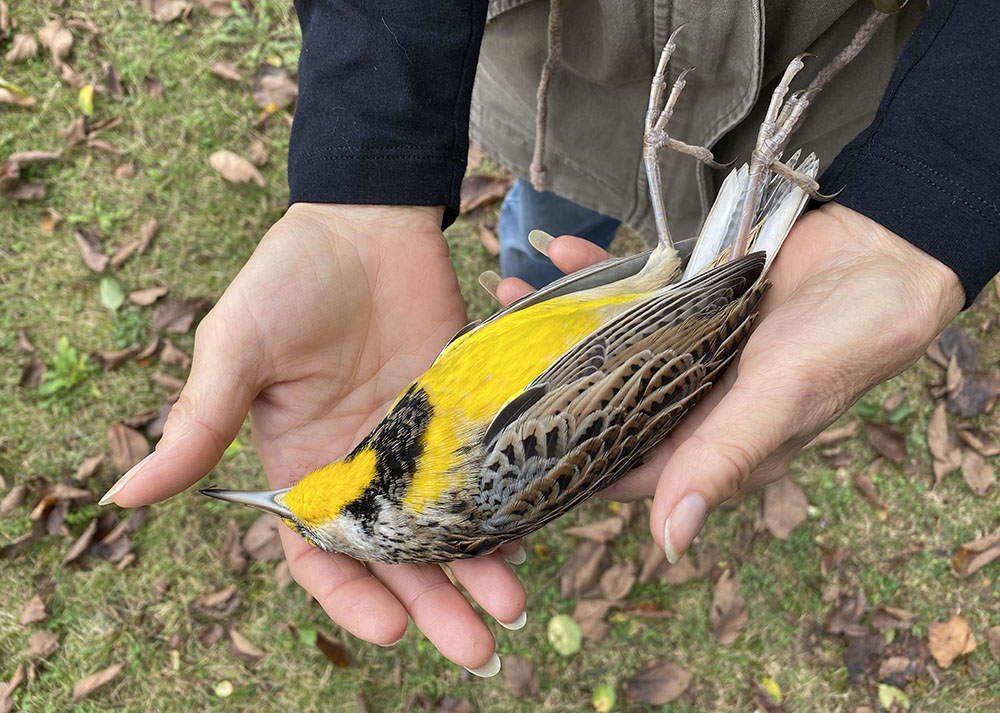
When Irgens Development requested approval for increased density and glass buildings, we were stunned that Wauwatosa went along as if there had been no previous agreement and as if it posed no ecological problems. However, dead birds are piling up around the buildings that have already been built. More and taller glass buildings that are not designed with the kind of state of the art, environmentally sensitive window treatments that are currently available will inevitably increase the avian carnage.
The City’s failure to require bird friendly glass and other readily available design features has led to mass bird death on the Innovation campus. In one month, from Sept 2 to Oct 1, 2021, over 60 bird carcasses have been collected by volunteers. Species include: Swainson’s Thrush; Ovenbird, Northern Water thrush; Tennesse Warblers; Palm Warblers; Nashville Warbler, Mourning Warbler; Red-eyed Vireo; Blackpoll Warblers; Connecticut Warbler; Magnolia Warblers; Black and White Warbler; Ruby-throated Hummingbird, Golden-crowned Kinglets; Red-breasted Nuthatches; Yellow-rumped Warbler; Eastern Kingbird, Meadowlark, and Northern Parula.
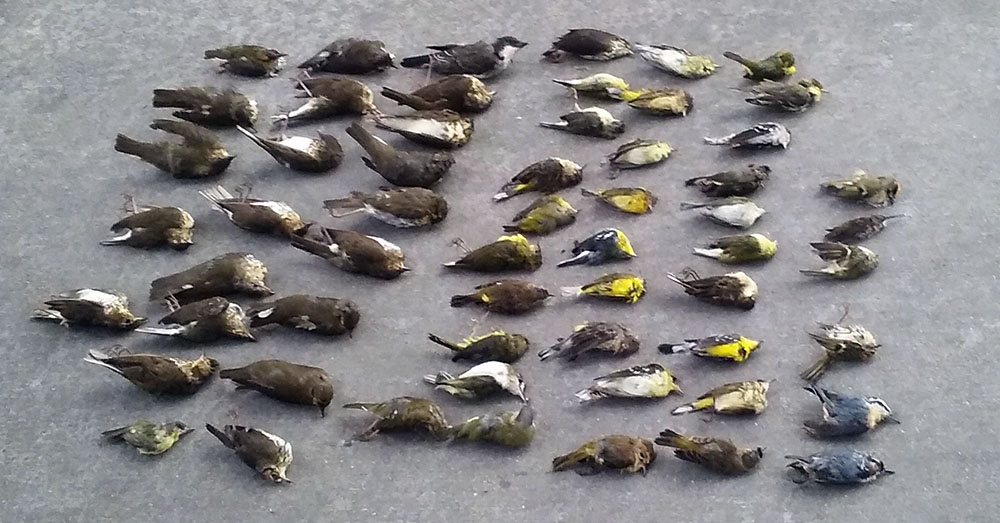
Unfortunately, although we and others have been trying to get these points across, our input continues to be dismissed. It seems that the City and Administration care more about catering to the developer than listening to the public. But the public has a voice and it must be heard.
Our mission as monitors of the County Grounds and stewards of the Monarch Conservancy has never been to oppose development on the privately-owned Innovation Campus. Our mission instead is to insist that development would not create additional hazards for existing wildlife, such as foxes, coyote, deer, hawks owls, and especially migrating birds and butterflies.

The County Grounds is more than scenic open space. It is an important migratory pathway and an ecological treasure. All developments, including the current proposal by Irgens, should be required to install bird-friendly windows, to design buildings and grounds to prevent bird and other wildlife death, and to enhance habitat value where possible. A green roof is a step in the right direction but more is needed.
Something also needs to be done on existing buildings to minimize the current death toll, whether it’s decals or other methods to dissuade birds from flying into glass. Turning off lights during peak migration times can help to minimize bird death. Ironically, Wauwatosa recently was designated a “Bird City.” That ought to mean something substantial rather than being the wrong sort of window dressing.
Let’s live up to the name “Bird City” and require Irgens to design their new buildings to be bird friendly!
Please call or write to the mayor of Wauwatosa and the Common Council to express your feelings and concerns.
In response to an inquiry about this issue, Charles Hagner wrote the following email response, which has been edited for length:
Thank you for asking me to comment about the planned new construction on the Innovation Campus.
Do the planned buildings concern me as director of Bird City Wisconsin? You bet they do. I recently saw the photographs that were taken between early September and the beginning of October near the ABB building and the Echelon apartment building, two buildings already standing on the Innovation Campus. The photos showed dozens of birds, every one killed after colliding with these buildings. Seeing all the carcasses collected and displayed was heartbreaking. But the photos are valuable—for two reasons.
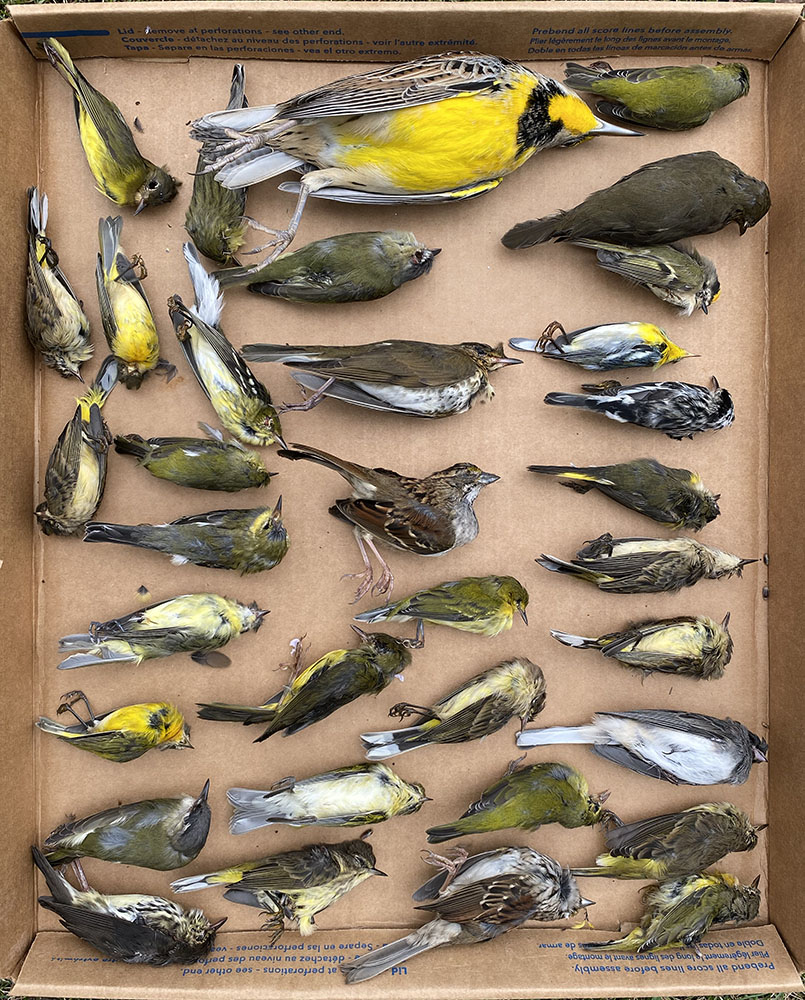
First, because they demonstrate the crucial importance of the County Grounds as a seasonal gathering place and a stopover site for migratory birds. Palm Warbler, for example, makes its nest far to our north, in the bogs, muskegs, and swamps of Wisconsin’s northernmost counties. Then it spends the winter in a narrow strip along the southeastern coast and in the Caribbean. The photos show that the County Grounds are a vital link in the chain of stopover locations that connect the warbler’s breeding and wintering areas and make it possible for it to migrate from one to the other. Palm Warbler, by the way, is considered a Species of Greatest Conservation Concern by Wisconsin DNR.
Second, the photos show plainly the mortality that the existing buildings are already causing. The killing isn’t speculation. It isn’t some theoretical risk. There’s no need to wonder if the buildings in the Innovation Campus might harm migrating birds; all you have to do is look at the pictures. Then ask yourself: If the ABB building and the Echelon apartments are already killing this many birds, including species of conservation concern, what effect will the new buildings have?
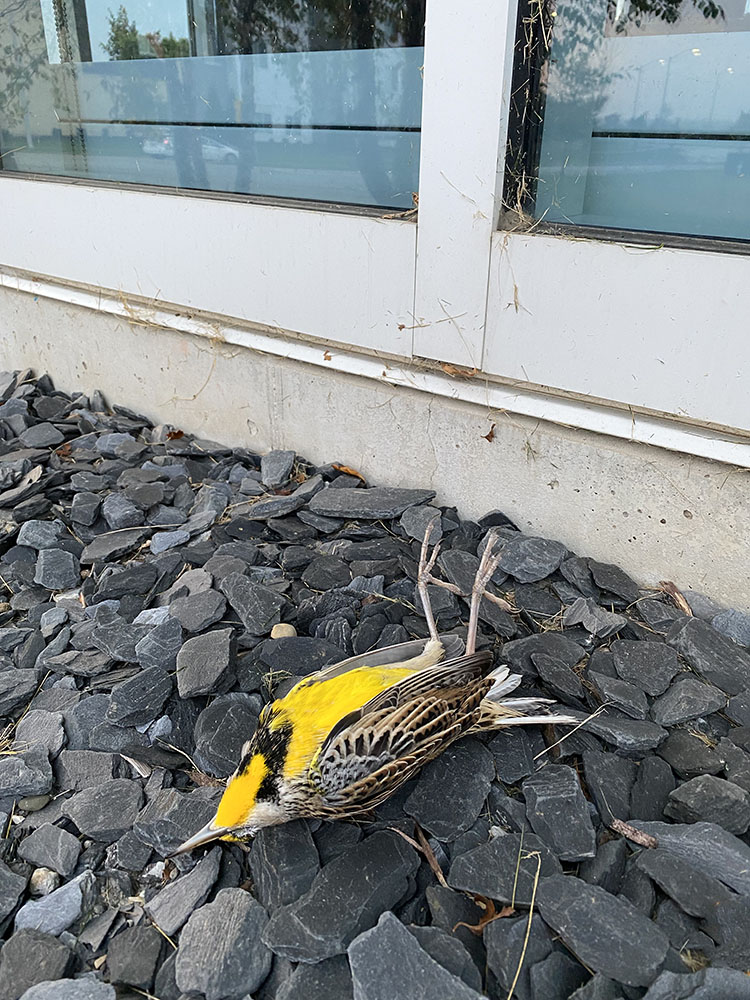
We were happy to welcome Wauwatosa as a Bird City in 2020. The city’s recognition reflects several things, including its ongoing bird monitoring in the nearby Forest Exploration Center, its work on the Tosa Green Summit, and especially its modification to the zoning of Sanctuary Woods, making it a Special Purpose Conservancy, not to mention a lot of determined, hard work by former alderperson Jeff Roznowski and others, whose hearts I know are in the right place, bird-wise. I look forward to working with them in the years to come.
But we’re not naive. Being recognized as a Bird City does not mean that every aspect of a community is bird-friendly; it means that a community accepts that being greener and more bird-friendly is worth doing, because green, bird-friendly cities are good for their residents as well as birds and good for business. It also means that the community has taken only its first steps toward being green and bird-friendly, and that it will take additional, and more ambitious, steps in the future. I look forward to hearing how Wauwatosa builds on its recognition as a Bird City during the annual renewal process in the years to come.
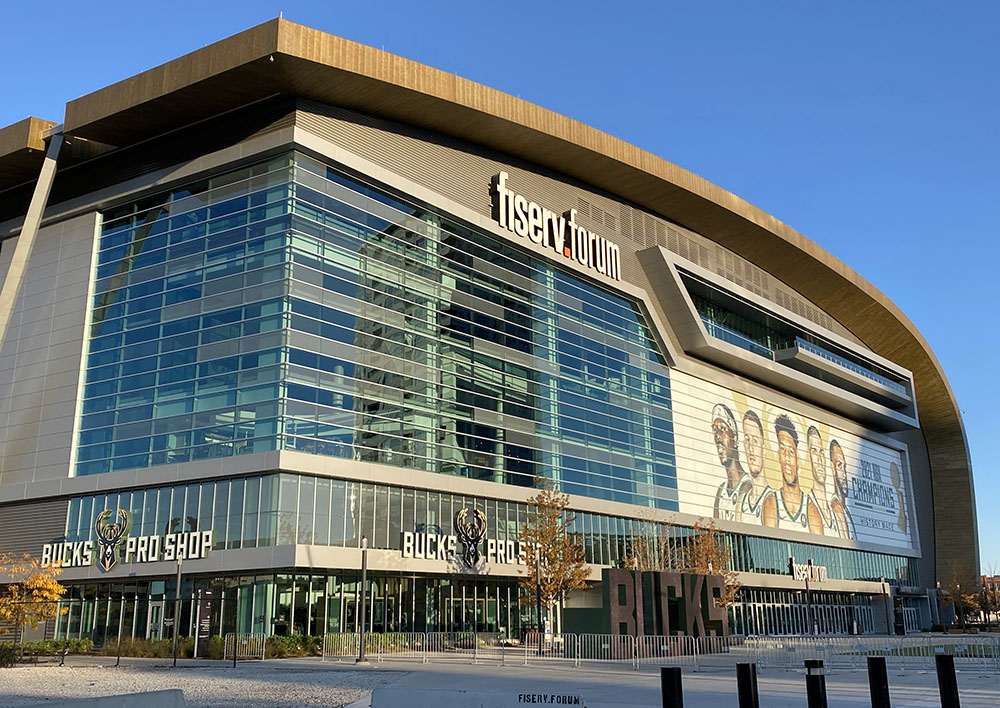
And I look forward to working with Wauwatosa. Being recognized as a Bird City connects communities with a broad support network that reaches not only across the state but nationwide, and includes a deep lineup of people and organizations possessing knowledge and expertise in preventing bird-window collisions. (For a real-world example of what that network can accomplish, look at Fiserv Forum in Milwaukee, another Bird City, the nation’s first bird-friendly sports and entertainment complex.) I hope Wauwatosa appreciates this and takes advantage of it.
Editor’s note: This is not a local phenomenon or issue. The Audubon Society in a recent newsletter article estimates that a billion birds are killed in collisions with windows nationwide. The same article includes a heartbreaking video of someone picking up dead birds one after another within a span of 30 seconds. A quick internet search of other articles about “birds killed by windows” yields over a dozen stories just within the past month. And that’s if you search “news.” If you search “all” most of the top hits explain how to prevent bird kills.

Solutions can be found locally. According to an article in Milwaukee Magazine, students and scientists at UW – Milwaukee are working on this issue and, as mentioned by Hagner, Milwaukee’s new sports arena, Fiserv Forum, is considered a model of bird-friendly design. If Milwaukee can do it why can’t Wauwatosa?
Barbara Agnew is the founder and director of Friends of the Monarch Trail. Cheryl Nenn is the Milwaukee Riverkeeper. Both are members of the Milwaukee County Grounds Coalition. Charles Hagner is the Director of Bird City Wisconsin and author of American Birding Association Field Guide to Birds of Wisconsin. Photographs by Eddee Daniel, curator of The Natural Realm, except as noted. The featured photo at the top is courtesy Friends of the Monarch Trail.

